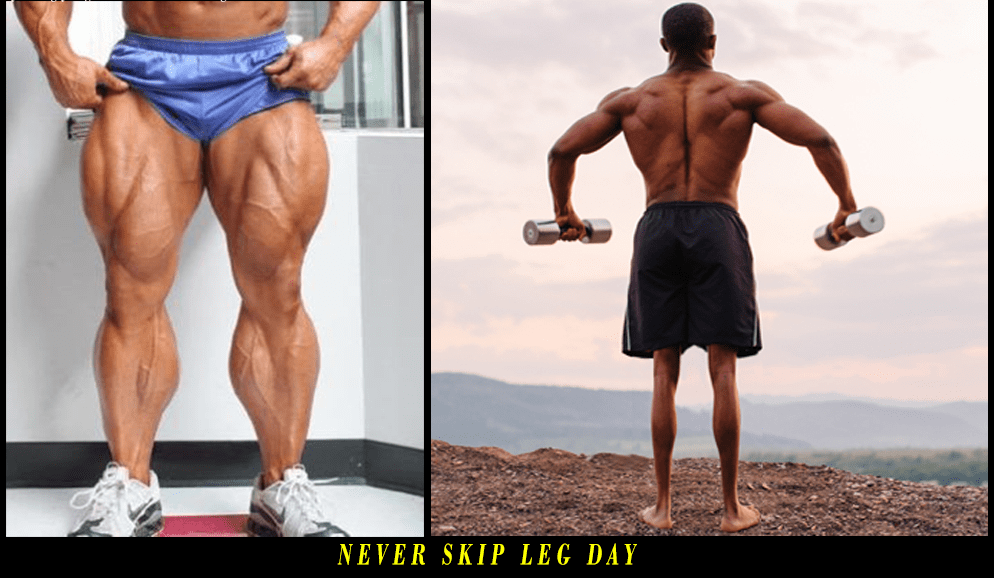Have you ever looked in the mirror and thought, “Why do I have skinny legs and a big upper body?” You’re not alone. Many people—especially men—notice this disproportionate body shape and feel frustrated or confused about its cause. While it may seem purely cosmetic, this imbalance can also indicate deeper issues with training routines, genetics, fat distribution, or even posture and strength alignment.
In this detailed guide, we’ll explore the common causes behind having a bulky upper body and thin legs, whether it’s normal or unhealthy, and most importantly—how to fix it with smart workout and nutrition strategies.
Understanding Body Proportions and Fat Distribution
Your body shape is largely dictated by genetics, muscle development, and fat storage patterns. Some people naturally store more fat or muscle mass in the upper body, while others develop leaner or less muscular legs.
Key factors influencing body proportions:
- Genetics: Determines how and where your body stores fat and muscle
- Body type: Ectomorphs tend to have skinny limbs; endomorphs may carry more upper body fat
- Training focus: Overemphasis on upper body workouts can leave legs underdeveloped
- Lifestyle: Sedentary routines, especially seated work, can cause muscle atrophy in legs
According to the National Institutes of Health (NIH), individual fat distribution is influenced by hormonal, genetic, and lifestyle factors, and it varies significantly from person to person.
Common Causes of Skinny Legs and Bigger Upper Body
Let’s dive into the most frequent explanations for this top-heavy body type.
1. Muscle Imbalance From Inconsistent Training
The “skipped leg day” stereotype exists for a reason. Many gym-goers prioritize upper body muscles—like biceps, triceps, chest, and shoulders—while neglecting their legs. The American Council on Exercise (ACE) highlights that skipping lower body workouts not only causes aesthetic disproportions but also limits full-body strength development.
Signs of a training imbalance:
- Upper body trained 3–4x per week, legs only once (or never)
- Lack of compound leg movements (squats, lunges, deadlifts)
- Overuse of machines instead of free weights for leg training
- No progressive overload applied to leg workouts
Over time, this causes disproportionate muscle development, resulting in big upper body, small legs.
2. Uneven Fat Distribution
Another reason could be your body’s unique fat storage pattern. Some people accumulate more fat in their upper body, while legs remain lean. A study published by Harvard Health notes that men tend to store fat in their abdominal and upper body areas, while women often store it in hips and thighs. This difference is largely hormonal.
Fat distribution may vary due to:
- Hormones (like cortisol, insulin, and testosterone)
- Genetics and family history
- Sex-specific patterns (Men often store fat in the abdomen and chest; women in hips and thighs)
If you have fat upper body and skinny legs, this could be a case of upper-body dominant fat storage, not necessarily muscle imbalance.
3. Genetics and Body Type
Your somatotype, or body type, can greatly influence your natural build.
- Ectomorph: Long limbs, lean frame, hard to gain muscle (often has skinny legs)
- Mesomorph: Naturally muscular, balanced proportions
- Endomorph: Stockier, easier fat gain, usually rounder upper body
The Journal of Strength and Conditioning Research confirms that somatotypes play a role in how individuals respond to resistance training and where they tend to build or store muscle.
4. Sedentary Lifestyle and Daily Habits
Modern life keeps us glued to chairs. Desk jobs, car commutes, and minimal walking all contribute to lower body underuse. According to the World Health Organization (WHO), physical inactivity is a leading risk factor for global mortality and contributes to poor muscle tone and metabolic decline.
Consequences include:
- Reduced blood flow and neuromuscular activation in legs
- Gluteal amnesia (inactive glutes)
- Poor muscle tone in hamstrings, calves, and thighs
Even if you hit the gym for an upper body workout daily, the rest of your day might be limiting your leg muscle stimulation.
Is It Unhealthy to Have Skinny Legs and a Large Upper Body?
Not necessarily—but there are physical and postural concerns to be aware of.
Potential health implications:
- Posture issues: Weak legs and glutes may cause poor pelvic alignment
- Joint stress: Overdeveloped upper body can place stress on knees and lower back
- Injury risk: Imbalances reduce stability and increase fall or strain risk
- Functional performance decline: Sports and daily movements require balanced lower and upper strength
It’s not just about appearance. Your skeletal and muscular system functions best when strength is symmetrically distributed.
How to Fix Skinny Legs and Big Upper Body
Fixing this imbalance requires a shift in workout programming, nutrition, and mindset. Let’s break it down.
Prioritize Leg-Focused Strength Training
You must train your legs with intent and intensity, just like you do for chest or arms.
Best compound exercises to grow legs:
- Squats (back, front, goblet)
- Romanian deadlifts
- Walking lunges
- Bulgarian split squats
- Step-ups
- Hip thrusts
Training frequency:
Aim for 2–3 dedicated leg days per week, using progressive overload to increase weight or reps.
Redesign Your Workout Split
To fix muscular imbalance, restructure your training split.
Example of a balanced weekly routine:
| Day | Focus |
|---|---|
| Monday | Lower Body – Strength |
| Tuesday | Upper Body – Push |
| Wednesday | Rest or Cardio |
| Thursday | Lower Body – Hypertrophy |
| Friday | Upper Body – Pull |
| Saturday | Mobility/Core |
| Sunday | Optional Leg Burnout or Active Recovery |
This ensures legs are no longer an afterthought and receive equal attention as upper body.
Add Isolation Exercises for Lower Body Symmetry
While compound lifts build mass, isolation movements can fine-tune aesthetics and boost lagging muscles.
Key isolation exercises:
- Leg extensions (quads)
- Seated and lying hamstring curls
- Standing calf raises
- Cable glute kickbacks
Use moderate to high reps (12–20) to stimulate muscle endurance and blood flow.
Improve Neuromuscular Activation
Some people struggle to grow legs due to poor mind-muscle connection. Activating the right muscles improves results dramatically. NASM (National Academy of Sports Medicine) recommends activation drills before workouts to enhance neural firing and ensure better muscle engagement.
Try this before leg workouts:
- Glute bridges (2–3 sets of 15)
- Bodyweight squats with pause
- Band side walks
Pre-activating your lower body ensures the muscles actually fire correctly during training.
Nutrition Tips to Support Leg Growth
Even with perfect workouts, you won’t build muscle without the right nutrition.
1. Eat Enough Calories
You need a caloric surplus to support muscle hypertrophy. Undereating leads to maintenance or weight loss—not growth.
2. Prioritize Protein
The International Society of Sports Nutrition recommends consuming 1.6–2.2 grams of protein per kg of body weight per day for muscle growth
3. Include Healthy Carbs and Fats
Fuel workouts with complex carbs (oats, brown rice, sweet potatoes) and healthy fats (avocados, olive oil, nuts).
4. Consider Creatine
One of the most researched supplements, creatine monohydrate, enhances muscle power and water retention in muscles—helpful for leg fullness.
How Long Will It Take to See Results?
Results vary, but with consistent effort, expect to see:
- Initial strength gains: 2–3 weeks
- Visual toning or size increase: 6–8 weeks
- Balanced upper/lower physique: 12–16 weeks
Track your thigh circumference, leg press strength, and photos to stay motivated.
When to See a Professional
Sometimes, muscle or fat imbalances may be tied to underlying issues.
Seek help if you experience:
- Extreme leg weakness despite training
- Muscle atrophy on one side
- Hormonal changes affecting fat storage
- Difficulty walking or balance issues
Consult a personal trainer, physiotherapist, or endocrinologist if your condition doesn’t improve despite training.
FAQs: Why Do I Have Skinny Legs and Big Upper Body?
Final Thoughts: Embrace the Journey Toward Balance
Having skinny legs and a big upper body is more common than you think—and totally fixable. With targeted training, proper nutrition, and a bit of patience, you can rebuild your proportions, boost overall strength, and feel more confident in your body.
Remember: your legs carry you through life—give them the attention they deserve.
Disclaimer: The content on Wellness Derive is for informational purposes only and not a substitute for professional medical advice, diagnosis, or treatment. Always consult a healthcare provider for medical concerns.



